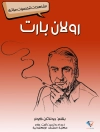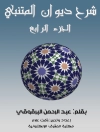Drawing on the recent ontological turn in critical theory, Spectral Dickens explores an aspect of literary character that is neither real nor fictional, but spectral. This work thus provides an in-depth study of the inimitable characters populating Dickens’ illustrated novels using three hauntological concepts: the Freudian uncanny, Derridean spectrality, and the Lacanian real. Thus, while the current discourse on character studies, which revolves around values like realism, depth, and lifelikeness, tends to see characters as mimetic of persons, this book invents new critical concepts to account for non-mimetic forms of characterization. These spectral forms bring to light the important influence of developments in nineteenth-century visual culture, such as the lithography and caricature of Daumier and J.J. Grandville. The spectrality of novelistic characters developed here paves the way for a new understanding of fictional characters in general.
Inhaltsverzeichnis
Introduction: An uncanny ontology of characterisation
Part I Spectral mimesis: portraits, caricature, and character 1 Mimesis’s ghosts: caricature and anamorphosis 2 Spectral character: dreams, distortion, and the (cut of the) real
Part II “Moor eeffocish things”: effigy and the bourgeoisie 3 Where “the specular becomes the spectral” in
The Old Curiosity Shop and
Dombey and Son 4 Imagos, dolls, and other gazing effigies in
Bleak House
Part III Beyond the realism principle: spectral materiality 5 Dream as spectral form in
Bleak House and the comic surplus of Micawber in
David Copperfield 6 The “As if” hauntology of
Little Dorrit and the uncanny dream of the three fathers
Bibliography
Index
Über den Autor
Andrew Smith is Professor of English Studies at the University of Glamorgan where he is Co-Director of the Research Centre for Literature, Arts and Science (RCLAS)












